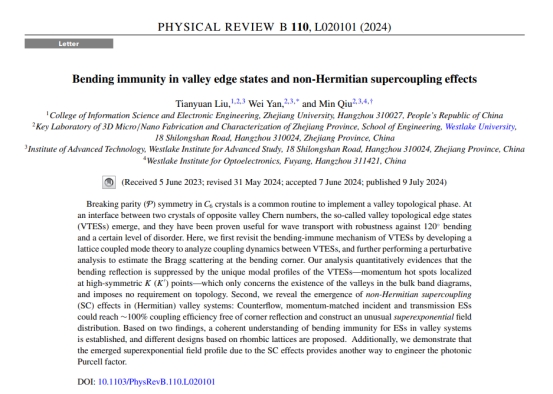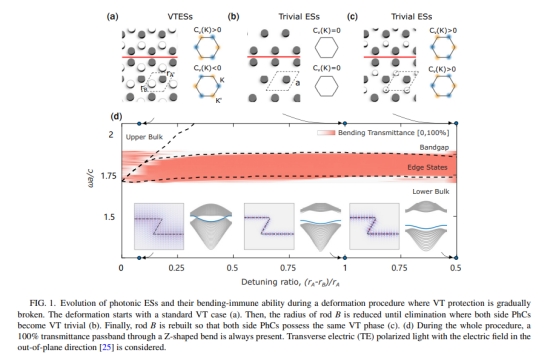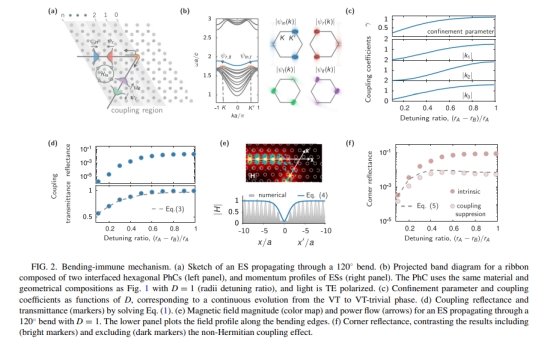Recently, an advancement in the field of topological photonic crystals was achieved by the research team led by Professor Min Qiu. The research findings, "Bending immunity in valley edge states and non-Hermitian supercoupling effects," by Tianyuan Liu, a doctoral student from the class of 2021, and researcher Wei Yan, were published in the Physical Review B journal. The paper rectifies a widespread misconception in the field of valley topological photonic crystals that "120° bending immunity is regarded as the privilege and hallmark of valley topology." Instead, the researchers point out that the phenomenon actually originates from a simple, topology-irrelevant momentum matching mechanism.

Topological photonic crystals, with their unique unidirectional robust waveguiding characteristics, have received considerable attention in recent years. Among them, valley topological photonic crystals, due to their simplicity and process compatibility, are the most widely applied and reported approach. In this sub-domain, the ability to pass through a 120° bend without reflection has always been considered a privilege and hallmark of valley topology.
During the course of the research, the team first observed the 120° bending phenomenon in non-valley topological photonic crystals. They explained this phenomenon from the perspective of momentum matching: this phenomenon actually originates from the momentum characteristics inherited from the valleys, which enables the momentum matching between the incident and bent modes, while mismatching between the incident and reflected modes, thereby achieving reflectionless bending transmission. Upon understanding this topology-independent bending mechanism, the team established the concept of "valley edge states," systematically describing the set of modes that can bend without loss, and proposed several new bending waveguides at different angles, which do not conform to old perceptions.
In the study of "valley edge state" bending, the team also discovered a non-Hermitian form of coupling matrix between the incident and bent modes. This non-Hermitian coupling matrix not only efficiently couples the incident mode to the bent mode but also forms a rapidly decaying energy distribution in real space around the bending point in the form of a second-order exponential function. This peculiar phenomenon not only offers a novel approach to controlling the state density of photonic crystals, but also provides a new paradigm for constructing and researching non-Hermitian systems without introducing gain and loss.
The publication of this research has clarified a widespread misconception in the field of valley topological photonic crystals and provided new insights into studying non-Hermitian phenomena in photonic crystals. In the future, our research team at the university will continue to deepen this research, promoting further understanding and application of the related theories.


Paper Link:https://journals.aps.org/prb/abstract/10.1103/PhysRevB.110.L020101

